
Royal Enfield Continental GT 650 - First Ride Review
- Sep 26, 2018
- Views : 27271


We’ve been waiting for over a year to see the Royal Enfield 650 Twins, the Interceptor 650 and Continental GT 650 on Indian roads. Fortunately, with the international launch behind us, that shouldn't be so far behind. Once launched, it would be interesting to see how the RE Twins perform against the current segment heavy-weight, Harley-Davidson Street 750 on our roads. But until then, let’s just compare them on paper and see how the two fare on the specs front.
Design and Features
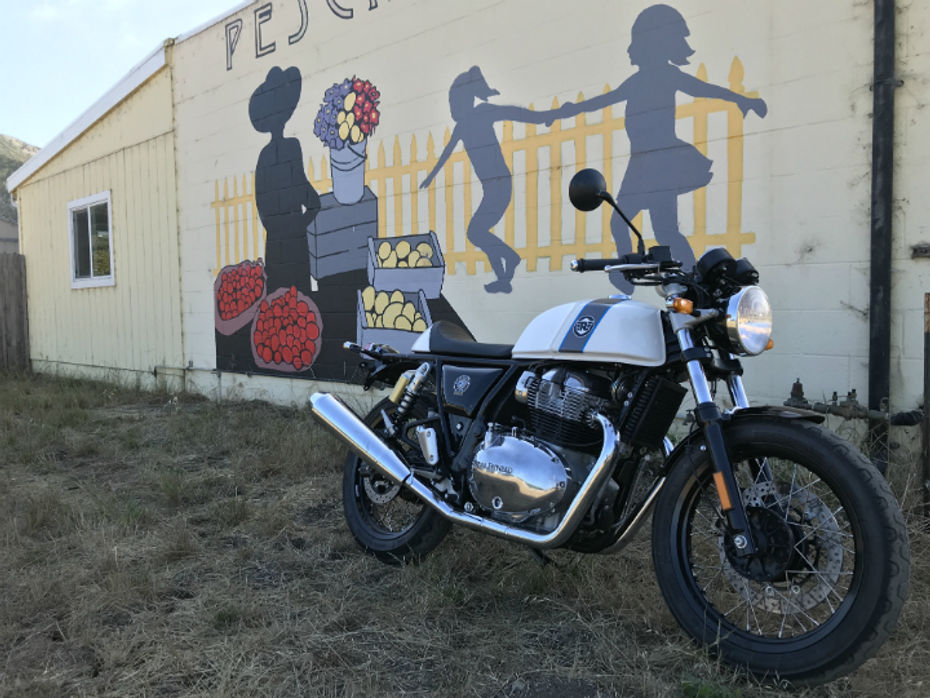
Let’s get one thing clear, all three motorcycles in their unique way possess the same old-school motorcycling character, at least in terms of their design. For starters, the Interceptor 650 seems to be inspired from the Triumph Bonneville series, with similar design cues like the round headlamp, flat seats and the teardrop-shaped fuel tank. Meanwhile, the Continental GT 650 is a cafe racer with clip-on handlebars, lower seat height, slightly rear-set footpegs and upswept twin-megaphone exhaust.
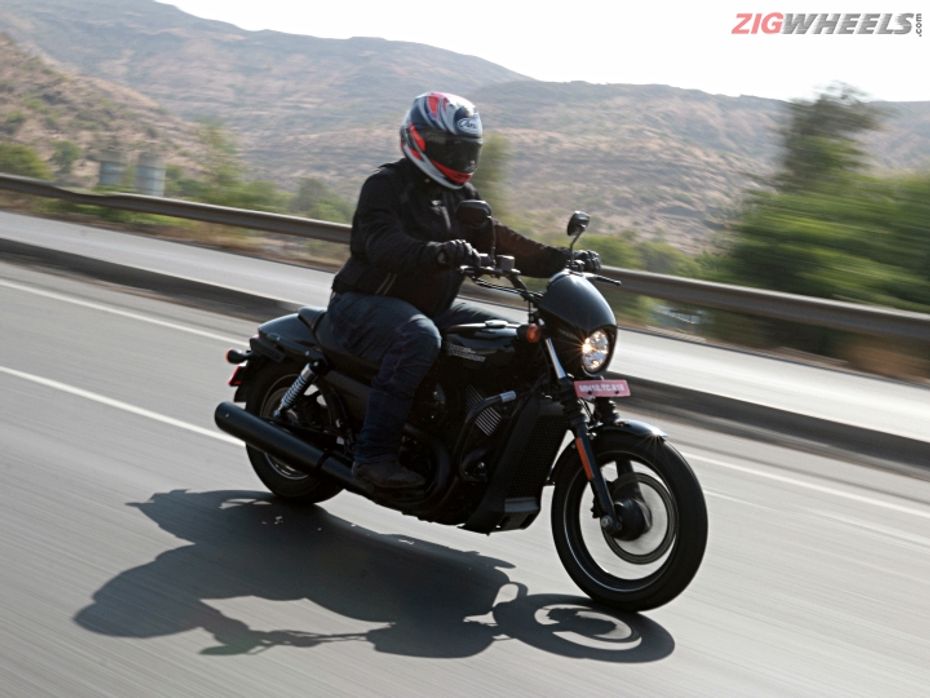
The Harley-Davidson Street 750, on the other hand, can be classified under “boulevard cruiser”, which is basically the idea of showcasing your motorcycle while cruising at low speeds. The motorcycle does look premium and has good road presence. To keep things short, the Street 750’s design feels like a mishmash between a cruiser and a roadster. It may not sport a typical cruiser design but it does manage to look cool. Especially the headlamp shroud, which adds to the mean look. We also love the way the exhaust headers wrap around the V-twin motor.
In terms of features, all three motorcycles take the “retro” tag too seriously. Hence, you miss out on LED lights, fully digital instrument cluster and other electronic aids.
Engine
|
Royal Enfield 650 Twins |
Harley-Davidson Street 750 |
|
|
Displacement |
648cc |
749cc |
|
Power |
47.6PS |
- |
|
Torque |
53Nm |
59Nm |
|
Architecture |
Parallel Twin |
V-Twin |
|
Cooling |
Air-cooling |
Liquid-cooling |
|
Compression Ratio |
9.5:1 |
11.0:1 |
Royal Enfield has built the motor from the ground-up for the RE twins. Things are kept pretty straightforward here. For example, compared to the V-Twin architecture seen on the Harley, the RE bikes uses a parallel-twin layout with air- and oil-cooling. This simplicity should theoretically help in keeping the cost in check. On paper it is the most powerful RE engine in their portfolio, although that really isn't the focus here.
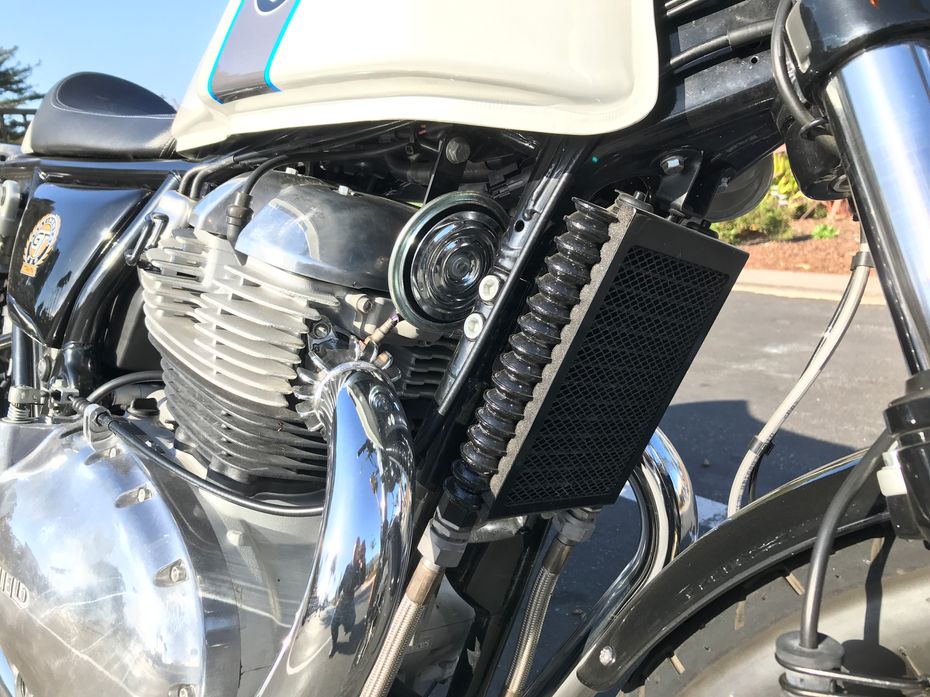
Preference has been given on producing a flat torque curve early on in the rev band. Almost 80 per cent of the torque is produced from just under 2500rpmm, hence when you open the throttle, you get plenty of grunt to play with. Bottom line is, this engine feels completely different from what've seen before, and that's a good thing. There's a lot to talk about this new engine. Head over here for a more in-depth look. We have also explained why the 650cc twins sound so similar to a V-twin. To know more and to listen to the engine come alive, head here.
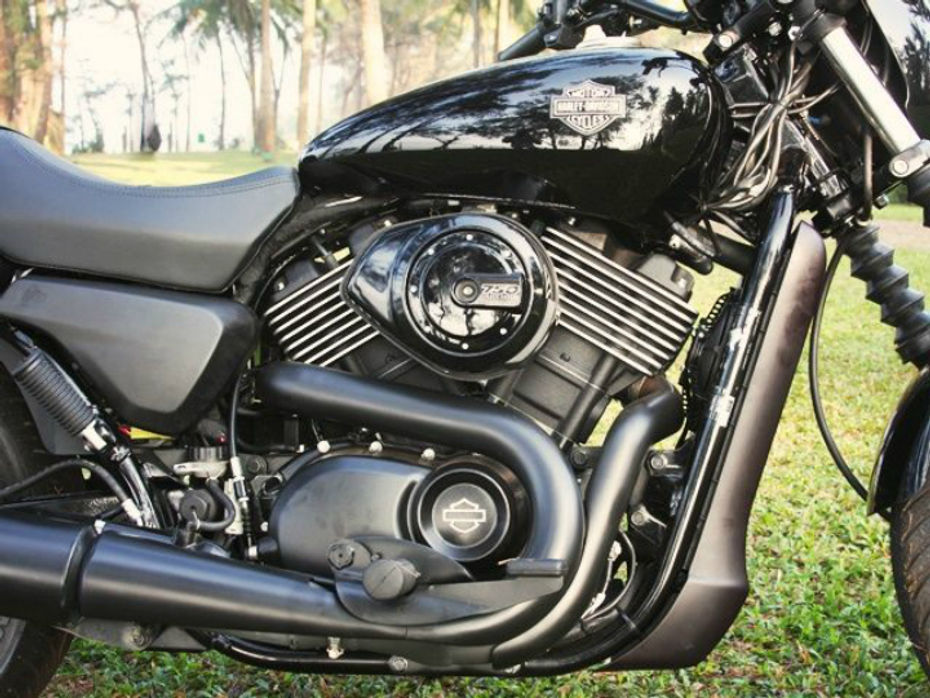
While yes, the Street 750 does pack a V-Twin heart, its Revolution X motor feels like a departure from a traditional Harley mill. For example, it uses liquid-cooling and overhead cams instead of pushrods. This alone helps it in being more efficient, faster revving and refined. Not to mention, the Street 750 feels more eager at low revs.
It's honestly too soon to declare a winner here considering the limited time we had with the RE twins. Once they are launched in India we'll be sure to pit them against each other for a comprehensive test.
Underpinnings
|
Royal Enfield 650 Twins |
Harley-Davidson Street 750 |
|
|
Frame Type |
Steel tubular frame |
Diamond type |
|
Front Suspension |
Telescopic |
Telescopic |
|
Rear Suspension |
Twin Shocks |
Twin Shocks |
|
Front Brakes |
Disc - 320mm |
Disc |
|
Rear Brakes |
Disc - 240mm |
Disc |
|
ABS |
Dual-Channel Standard |
Dual-Channel Standard |
|
Dry Weight |
Interceptor 650 - 202kg Conti GT 650 - 198kg |
223kg |
|
Fuel Tank |
Interceptor 650 - 13.7-litres Conti GT 650 - 12.5-litres |
13.1-litres |
|
Ground Clearance |
174mm |
145mm |
|
Seat Height |
Interceptor 650 - 804mm Conti GT 650 - 790mm |
720mm |
|
Wheelbase |
1360mm |
1520mm |
|
Rake (Deg) |
24 |
32 |
Both the Interceptor 650 and the Continental GT 650 are built around a steel tubular double cradle frame. While both share similar underpinnings and suspension components, the front-end feel on the Conti GT 650 feels much better thanks to more weight over the handlebars. This allows you to chuck the Conti from one corner to the other easily, making it feel more agile than the Interceptor.
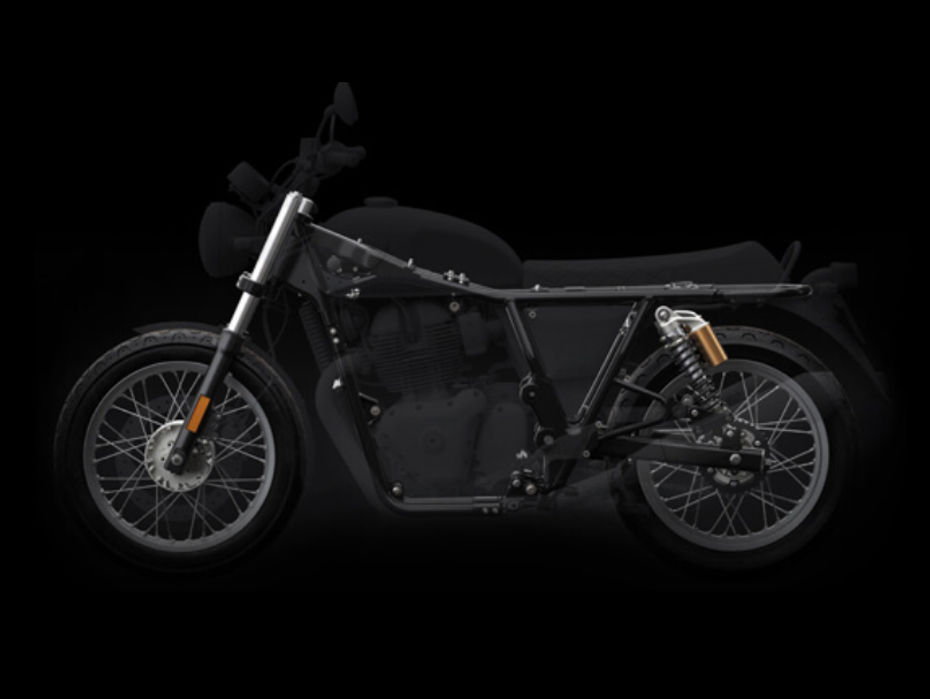
Speaking of which, the Interceptor 650 is also agile enough to combat the windiest of highways (at least the ones in California). The 320mm floating disc at the front and 240mm unit at the rear are also shared by the twins, offering a decent amount of bite when applied. The rear suspension does feel a bit stiff sometimes, but then again, we'll have to test the bikes in India to see how they perform on our roads.
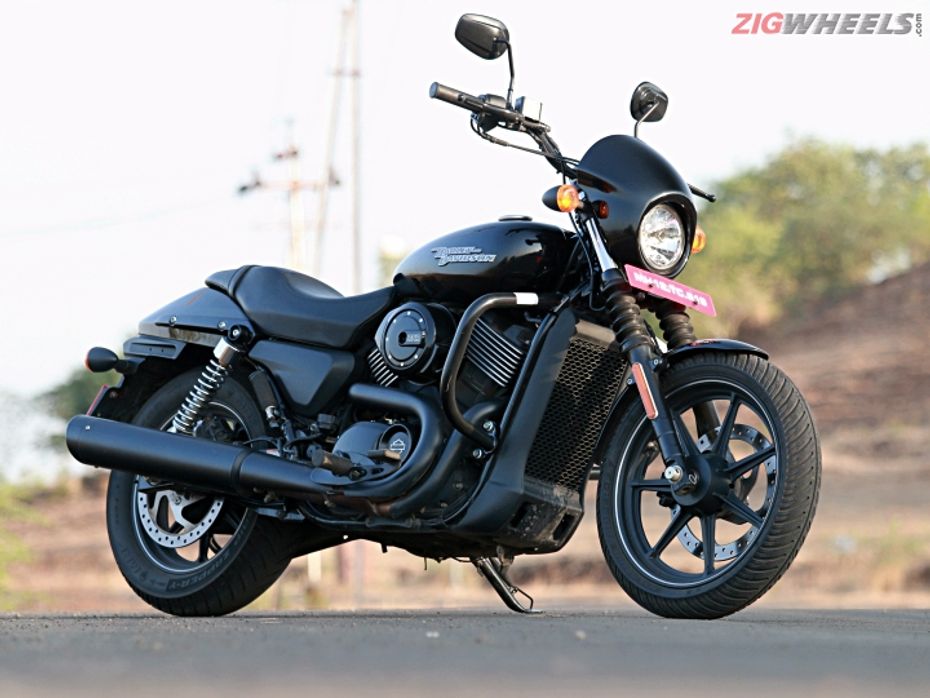
Heading over to the Harley, it features a diamond-type frame, which may seem basic at first but is tuned for our road conditions. The Street 750 can also manage a set of corners with ease. This is mainly due to its wheelbase of 1520mm and a rake angle of 32 degrees. Harley also updated the braking setup on this year's model. But yet, we felt that the rear still steps out under hard braking. While the brakes have improved over the earlier edition, it still feels a bit wooden. (ABS is available as standard on both bikes)
Pricing and Verdict
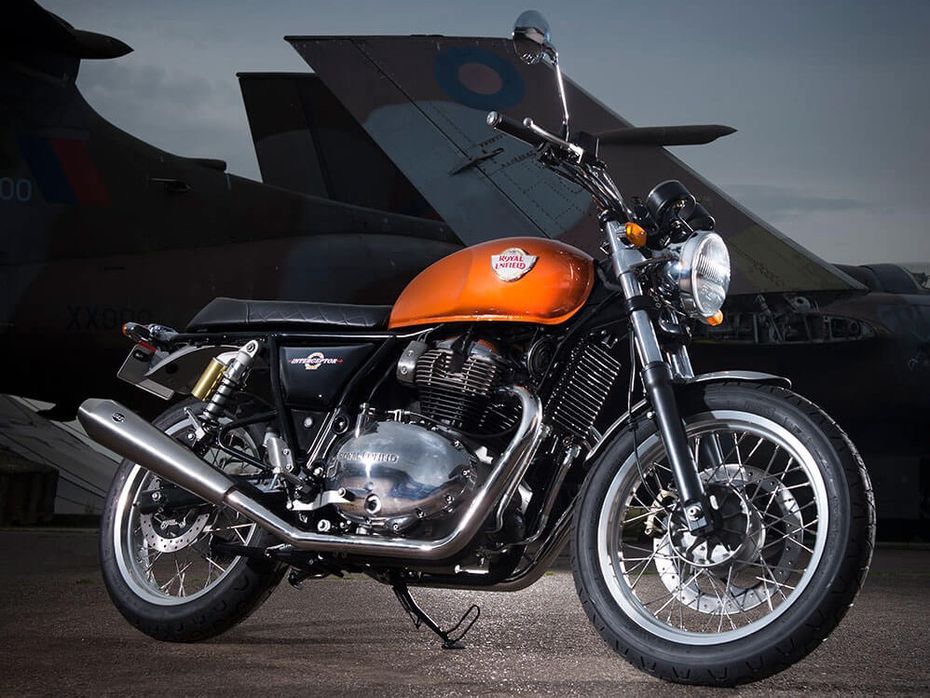
Heading over to the Harley, it features a diamond-type frame, which may seem basic at first but is tuned for our road conditions. The Street 750 can also manage a set of corners with ease. This is mainly due to its wheelbase of 1520mm and a rake angle of 32 degrees. Harley also updated the braking setup on this year's model. But yet, we felt that the rear still steps out under hard braking. While the brakes have improved over the earlier edition, it still feels a bit wooden. (ABS is available as standard on both bikes).


Royal Enfield Continental GT 650 - First Ride Review

Royal Enfield Interceptor 650: First Ride Review

Kawasaki Vulcan S vs Harley-Davidson Street 750: Road Test Review

Triumph Street Twin vs Royal Enfield Interceptor & Is The Twin Thrice...

Royal Enfield Interceptor 650 Vs Harley-Davidson Street 750: Real...

Royal Enfield Interceptor 650 vs BMW G 310 GS - Which One Can Help...

Royal Enfield Interceptor 650 vs Kawasaki Z650 vs Harley-Davidson...

Engine Comparo: Royal Enfield 650cc Twin vs Kawasaki Ninja 650 vs...

Royal Enfield Interceptor 650 BS6 vs Kawasaki W800 | The Best...

Royal Enfield Continental GT 650 vs Harley-Davidson Street Rod: Spec...
 Royal Enfield Continental GT 650
Royal Enfield Continental GT 650
 Royal Enfield Super Meteor 650
Royal Enfield Super Meteor 650
 Royal Enfield Himalayan 450
Royal Enfield Himalayan 450
 Royal Enfield Bear 650
Royal Enfield Bear 650
 Kawasaki Ninja 300
Kawasaki Ninja 300
India's largest automotive community
 Royal Enfield Classic 350
Rs. 1.93 Lakh
Royal Enfield Classic 350
Rs. 1.93 Lakh
 Royal Enfield Hunter 350
Rs. 1.49 Lakh
Royal Enfield Hunter 350
Rs. 1.49 Lakh
 Royal Enfield Continental GT 650
Rs. 3.19 Lakh
Royal Enfield Continental GT 650
Rs. 3.19 Lakh
 Royal Enfield Bullet 350
Rs. 1.73 Lakh
Royal Enfield Bullet 350
Rs. 1.73 Lakh
 Royal Enfield Meteor
Rs. 2.05 Lakh
Royal Enfield Meteor
Rs. 2.05 Lakh